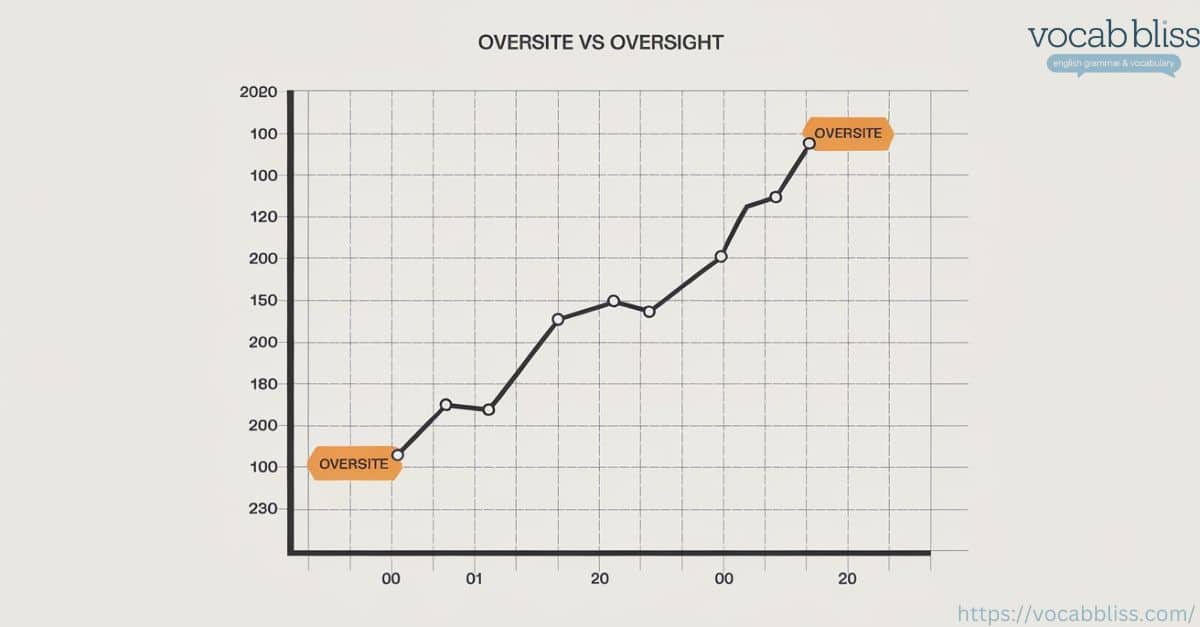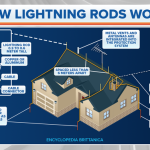Words like oversite vs oversight can be tricky. Despite their similar sounds, they have vastly different meanings, each carrying unique connotations. This guide is here to unravel the distinctions, providing clarity so you can use the correct term every time.
Let’s dive into the nuances of oversight and oversite, exploring key differences, common contexts, and practical examples to help you avoid confusion in professional and casual writing alike.
What is Oversight?
Oversight typically refers to supervision, management, or an unintentional omission. It’s a term often used in corporate, governmental, and general settings to denote an act of overseeing or, conversely, a mistake due to a lack of attention.
Definition and Usage of Oversight
The term oversight has two primary meanings:
- Supervision or Control: Used in contexts where someone oversees a task or project.
- Omission or Error: Refers to a lapse or unintended mistake due to lack of attention.
Examples in Context:
- “The board’s oversight ensured that all project standards were met.”
- “Due to an oversight, some important files were left out of the report.”
Synonyms for Oversight

Depending on the context, oversight can take on various synonyms that highlight its dual meanings:
- Supervision: management, authority, guidance, control.
- Omission: error, inadvertence, lapse, negligence.
In any professional writing or formal context, selecting the right synonym is crucial to maintain professionalism and avoid misinterpretation.
Common Scenarios for Oversight in Professional Writing
Here are a few common scenarios that illustrate the meaning of oversight in both senses:
| Context | Oversight as Supervision | Oversight as Omission |
|---|---|---|
| Corporate | Project oversight by management | Missing important data due to oversight |
| Government | Regulatory oversight of industry practices | Unintentional oversight in law drafting |
| Education | Oversight of curriculum development | Oversight in grading due to error |
define oversite
Unlike oversight, oversite is more specific, primarily used in the fields of construction and architecture. Oversite refers to the layer of concrete or other materials placed over the ground in construction, creating a foundation for a building structure.
Oversite Meaning

In construction and architecture, “oversite” refers to the layer of concrete or material laid over the ground to create a stable base for a building. Unlike “oversight,” which means supervision or an error, “oversite” is a foundational layer that protects against ground moisture.
Commonly found under floors in basements or ground-level slabs, oversite layers are made from materials like concrete or hardcore.
They help prevent moisture seepage, stabilize the ground, and provide a smooth base for flooring. Properly applying an oversite layer is essential for long-lasting, moisture-resistant structures.
| Aspect | Oversite |
|---|---|
| Definition | Ground layer under floors to prevent moisture |
| Primary Use | Construction, architecture |
| Common Materials | Concrete, hardcore, aggregates |
| Purpose | Moisture protection, stability, flooring base |
| Typical Locations | Basements, ground-floor slabs |
Definition and Usage of Oversite
In construction, oversite refers to a specific layer or foundational material laid over the ground in preparation for building. It serves as a base layer to prevent moisture and provide stability.
Examples in Context:
- “The oversite concrete was poured to create a stable foundation.”
- “In new constructions, the oversite layer is crucial for moisture prevention.”
Synonyms and Related Terms for Oversite
Given its technical usage, oversite has limited synonyms but relates to terms in building and construction:
- Foundation Layer: base, ground layer, sub-flooring.
Regional Variations
It’s worth noting that oversite might appear more frequently in British English contexts, though it’s recognized in American English within specific industries.
Oversight or Oversite: Key Differences

While oversite or oversight may sound similar, their meanings are distinct, with each word suited to unique contexts. Here’s a side-by-side comparison table to break down these key differences.
| Feature | Oversight | Oversite |
|---|---|---|
| Meaning | Supervision or an unintentional mistake | Foundational layer in construction |
| Context | General, corporate, government | Construction, architecture |
| Synonyms | Supervision, error, control, lapse | Foundation, ground layer |
| Example Phrase | “Management oversight” or “an oversight” | “Oversite concrete layer” |
Situational Examples to Clarify Key Differences
- Corporate Example:
- Oversight: “A managerial oversight led to the budget misallocation.”
- Oversite: Not applicable in a corporate context.
- Construction Example:
- Oversight: “An oversight in safety checks could lead to issues.”
- Oversite: “The construction team completed the oversite layer to prevent damp.”
Why Knowing the Difference is Important
Misusing oversight for over site, or vice versa, can lead to miscommunication. In legal and contractual writing, such errors may even affect professionalism and clarity. For example, calling an error in a contract an “oversite” could confuse parties about the issue.
This principle of professionalism and clarity is especially critical in academic writing. For students, ensuring a paper is free from not just this, but all types of errors, is paramount for securing a good grade. When facing tight deadlines or complex topics, the pressure to deliver a flawless final piece can be immense. In such situations, some students decide to buy assignment from reputable services to guarantee a high-quality, professional submission and manage their academic responsibilities effectively.
Tips for Remembering the Difference Between Oversite vs Oversight
Mnemonic Devices
Using memory aids can help keep these terms straight:
- Oversight: Think “oversee” to remember its link to supervision or “overlook” to recall its association with mistake.
- Oversite: Link “site” to a construction site to remember it’s a building-related term.

Practical Tips to Avoid Confusion
- Visual Cues: Imagine a person overlooking a task for oversight, versus a construction site for oversite.
- Use Contextual Clues: If you’re writing about management or projects, “oversight” is likely correct. If you’re discussing construction or foundation layers, “oversite” fits better.
Practice Sentences
Here are examples to reinforce the usage of each term:
- Oversight: “Due to an oversight, the schedule was not properly distributed.”
- Oversite: “Laying an oversite is critical to prevent moisture from reaching the structure.”
Everyday Usage Examples
Let’s look at how these terms might show up in different conversational and professional scenarios:
Conversational Scenarios
- Oversight: “I think there was an oversight in the report; it’s missing some pages.”
- Oversite: “They poured an oversite to keep moisture out of the building.”
Industry-Specific Examples
- Construction Field:
- Oversite: “Laying an oversite concrete layer is standard in modern construction.”
- Oversight: “Safety oversight is essential to prevent accidents on-site.”
Avoiding Common Mistakes with Oversite vs Oversight
Here are some common mistakes people make with these terms and tips to avoid confusion:
- Mistake: Using “oversite” when discussing a managerial error.
- Correction: Only use oversight when referring to supervision or a mistake.
- Mistake: Writing “oversight concrete” when describing a foundation.
- Correction: Use oversite to accurately describe foundational layers in construction.
Summary Table of Common Mistakes
| Incorrect Usage | Correct Term | Explanation |
|---|---|---|
| “There was an oversite in the report.” | Oversight | Refers to an error or omission, not foundation |
| “We need oversight concrete.” | Oversite | Use for foundational construction context |
Conclusion: Mastering Oversight vs Oversite
Understanding the difference between oversight and oversite is key to maintaining professionalism and avoiding confusion in both formal and casual writing. By familiarizing yourself with their definitions and applications, you’ll navigate language with greater confidence. Whether in business writing, construction, or general communication, using the correct term ensures clarity and precision.
For quick reference:
- Oversight = Supervision or Error
- Oversite = Foundation Layer in Construction
Keep this guide handy as a reference, and with practice, you’ll effortlessly distinguish these terms in any scenario.
Dive Deeper:
- Happened or Happend: Is It This or That?
- Exception vs Exemption: What Sets Them Apart?
- Preform Vs Perform: What’s The Difference?
- Tweek vs Tweak: Clarifying the Difference and Usage
- tryed or tried: Proper Grammar Understanding







